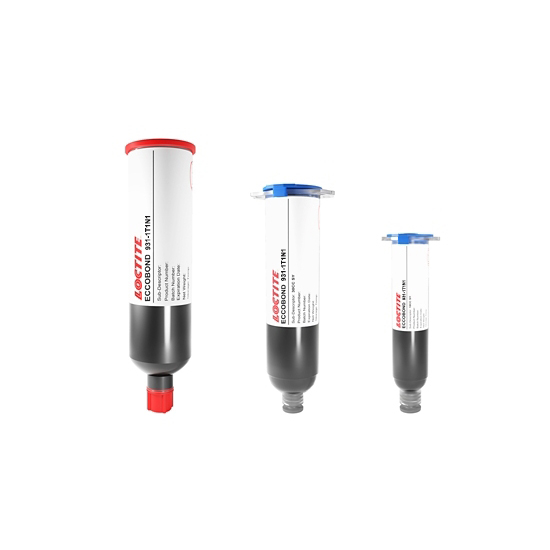LOCTITE ECCOBOND 931-1T1N1
- Low viscosity
- Low temperature cure
- Extraordinary adhesion
Product Description
LOCTITE® ECCOBOND 931-1T1N1 die attach adhesive is designed for smart card applications. This clear, low viscosity epoxy develops extraordinary adhesion on substrates such as glass, Alumina, Ferrite, Aluminum and steel after a low temperature cure. It has low ionics and is fairly stable when exposed to printing inks.
LOCTITE® ECCOBOND 931-1T1N1 is used as a die attach for smartcards to bond the wire bonded module onto the plastic card using low temperature cure. It's also being used in multiple bond lines, in assembling inkjet and thermal printer heads, for die attach and for assembling several other components (metal, ceramic and some plastics) around the print head.
LOCTITE® ECCOBOND 931-1T1N1 is fairly transparent at least in thin layers, although there is no spec or control over the optical properties. It is an epoxy, so becomes more yellow on aging at high temperature. It is very reactive, with short work life & critical storage conditions. It is corrosive and a strong skin sensitizer, so should be kept away from skin & eyes. And in pre-mixed form it is strongly exothermic. The SADT temperature is low, so it cannot be transported by air, and there are severe restrictions on shipping by road & sea. Having said that, it fully makes up for those with its end properties and for special applications it can make a difference.
Cure Schedule
- 2 hours @ 100°C
- 2 hours @ 60°C
Technical Specifications
| General Properties | |
| Pot Life Pot Life Pot life is the amount of time it takes for the viscosity of a material to double (or quadruple for lower viscosity materials) in room temperature after a material is mixed. It is closely related to work life but it is not application dependent, less precise and more of a general indication of how fast a system is going to cure. | 2 hours |
| Work life @25°C Work life @25°C Work life is the amount of time we have to work with a material until it is no longer able to be easily worked and applied on a substrate. It is based on the change in viscosity and it can rely on the application requirements. | 4 hours |
| Physical Properties | |
| Thixotropic index Thixotropic index Thixotropic Index is a ratio of a material s viscosity at two different speeds in Ambient temperature, generally different by a factor of ten. A thixotropic material s viscosity will decrease as agitation or pressure is increased. It indicates the capability of a material to hold its shape. Mayonnaise is a great example of this. It holds its shape very well, but when a shear stress is applied, the material easily spreads. It helps in choosing a material in accordance to the application, dispense method and viscosity of a material. | 2.8 |
| Viscosity Viscosity Viscosity is a measurement of a fluid’s resistance to flow. Viscosity is commonly measured in centiPoise (cP). One cP is defined as the viscosity of water and all other viscosities are derived from this base. MPa is another common unit with a 1:1 conversion to cP. A product like honey would have a much higher viscosity -around 10,000 cPs- compared to water. As a result, honey would flow much slower out of a tipped glass than water would. The viscosity of a material can be decreased with an increase in temperature in order to better suit an application | 2,400 mPa.s |



